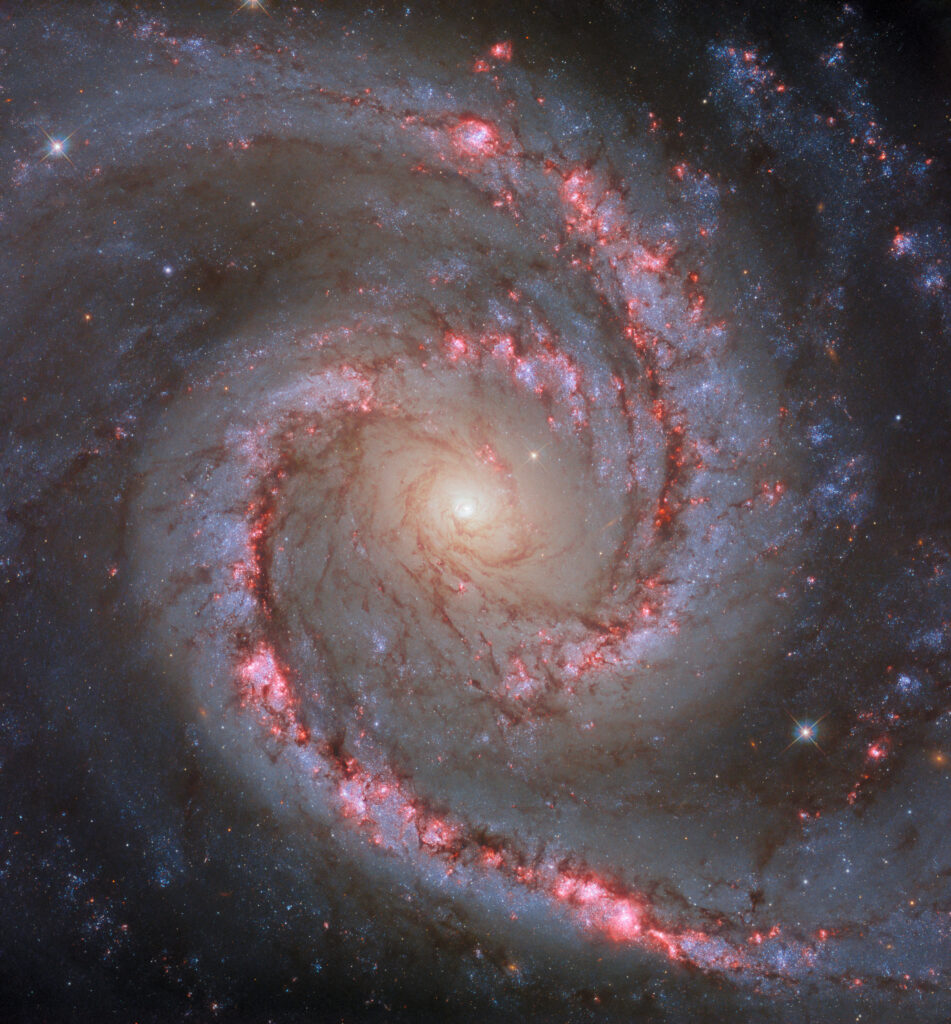The Hubble mission team published a new image. It shows the galaxy NGC 1566, also known by the unofficial name “Spanish Dancer”.

NGC 1566 is located at a distance of approximately 60 million light-years from Earth in the direction of the constellation Doradus and is part of the eponymous group of galaxies. It is classified as a transitional spiral galaxy. This means that there is neither a clearly present nor a clearly absent bar in its center.
The galaxy is located “facing” us, so the Hubble photo allows us to examine its structure in all its details. NGC 1566 owes its unusual nickname to the bright, dramatic swirls of its spiral arms, which somewhat resemble a moving dancer. Their characteristic pink color is due to the presence of many regions of active star formation. You can also pay attention to the bands of dark dust stretching from the arms to the center, which break up into many fibers twisting around the glowing galactic core.
As we have already noted, NGC 1566 is part of a group of gravitationally bound galaxies. They differ from galactic clusters in size and mass: the latter can contain hundreds of galaxies, while groups contain several dozen galaxies. At the same time, there is no exact distinction between the concepts of a group of galaxies and a cluster of galaxies. Some astronomers suggest using the mass criterion for classification. If it is less than 80 trillion solar masses, then we are talking about a group of galaxies; if it is more, then we are talking about a cluster of galaxies.
Earlier we talked about how astronomers found an almost completely dark galaxy.
According to https://esahubble.org
Follow us on Twitter to get the most interesting space news in time
https://twitter.com/ust_magazine
